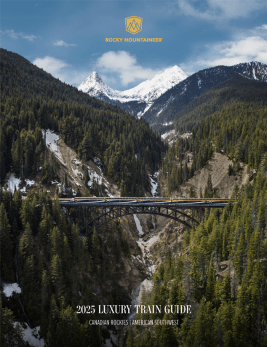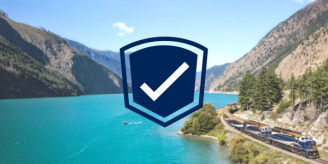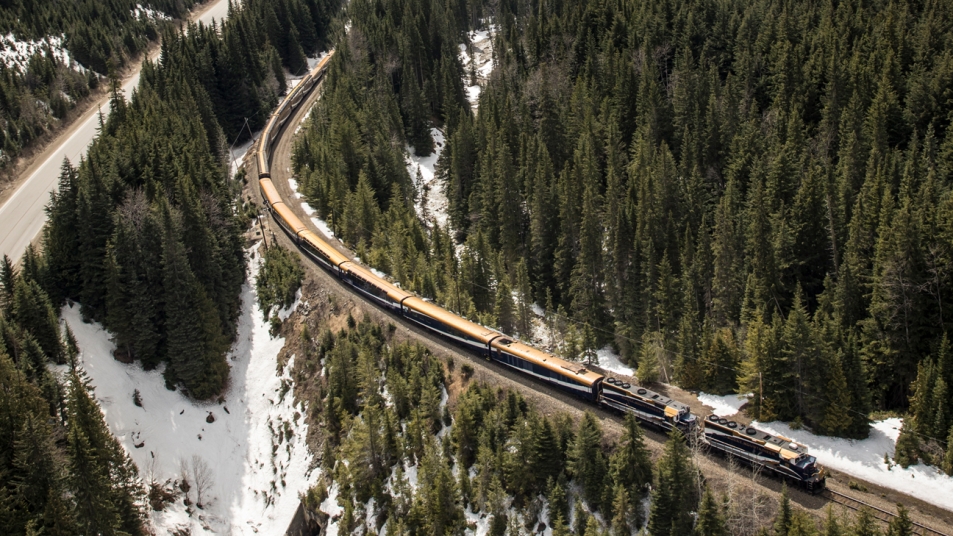
When you travel onboard Rocky Mountaineer, you’ll experience a range of diverse climates as you journey through each region. Our trains run from April to November every year, spanning three seasons each with their own distinct landscapes and temperature variations.
From the temperate West Coast, through the dry and arid Fraser Valley, to the crisp mountain air in the Canadian Rockies, read on to learn what to expect from each region and what to wear to make your journey as comfortable as possible.
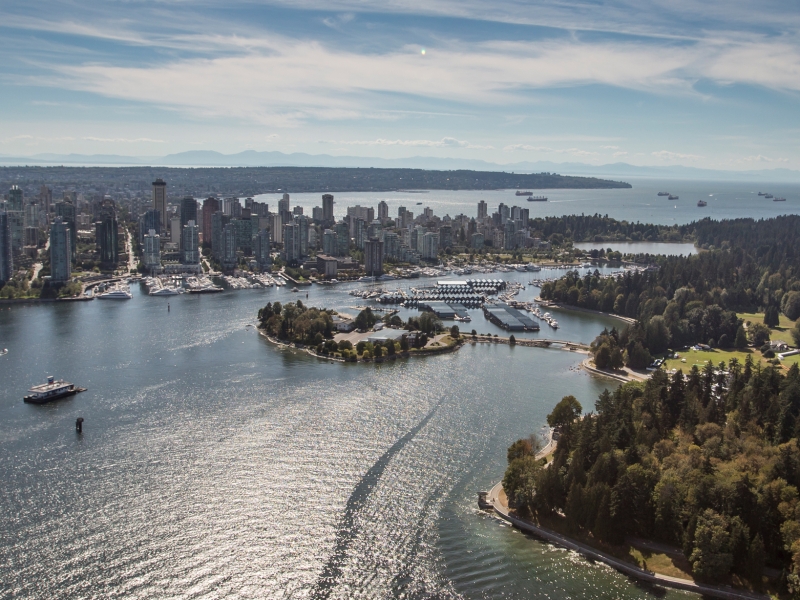
The urban oasis of Vancouver boasts year-round temperate weather - and lots of rain.
Western Canada & Canadian Rockies
Vancouver, B.C. | The West Coast
Surrounded by stunning natural beauty, the West Coast is nestled between the Pacific Ocean and the Coast Mountains. Here, the weather is temperate and often rainy. Expect cool and wet spring and fall seasons with a mild summer season in July and August.
Over the course of our operating season, temperature can vary between 2°C to 23°C (35-73°F) and rarely exceed 26°C (78°F).
Kamloops, B.C. | Fraser Valley & BC Interior
Kamloops is located in the Thompson Okanagan region of British Columbia, in between Vancouver and the Canadian Rockies. Generally, Kamloops is cold and temperate with a dry and arid climate - except in the summer, when it gets quite warm. Temperatures between June and September can climb to 30°C (86°F). Expect hot, dry weather with clear and sunny skies.
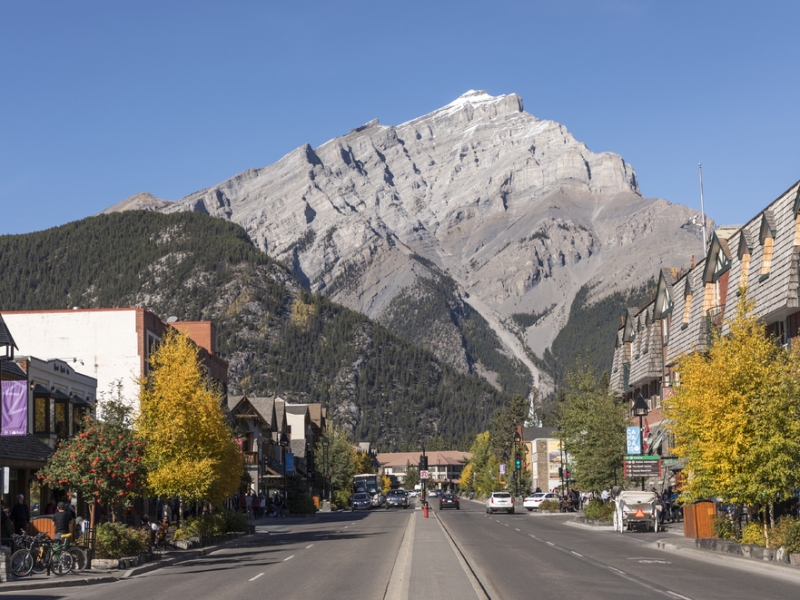
The iconic Cascade Mountain over Banff is an amazing sight, no matter the time of year.
Banff | The Canadian Rockies
Located in the heart of the Rocky Mountains, Banff sits in the Bow Valley corridor in Banff National Park and is home to more extreme climates than British Columbia. Spring is the coldest season we operate in, with temperatures averaging a high of 10 to 14°C (50-57°F) and a low of -10°C (14°F). You may still see snow and ice packs on many parts of the route, and especially on mountains.
Mornings and evenings are typically the coolest times, with temperature fluctuating throughout the day. Summer temperatures are warm and mild, varying between -2°C to 23°C (28-73°F), and taper off as we enter the fall months.
Jasper | The Canadian Rockies
Jasper is located approximately three hours north of Banff, tucked away in the mountains of the Canadian Rockies. The temperature is very similar to Banff but due to its more northerly location, it can get colder in the mornings and evenings.
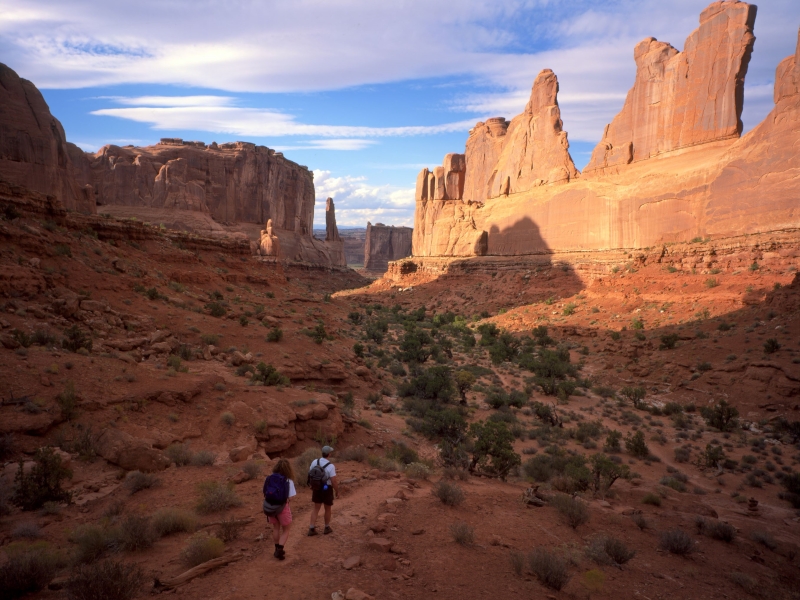
Arches National Park is located just outside of Moab and has a true desert climate.
American Southwest
Denver, Colorado
Known as the ‘Mile High City’ for its unique position exactly one mile above sea level, Denver offers panoramic alpine views and 300 days of sunshine annually. The climate leans quite warm with spring temperatures ranging from -2°C to 23°C (28-73°F), summer temperatures that can reach highs of 33°C (91°F), and cooling to an average of 20°C (68°F) in the fall.
Moab, Utah
Home to the famous Arches and Canyonlands National Parks, the charming resort town of Moab has a true desert climate. July and August are the hottest months, with temperatures that can reach 40°C (104°F) and gradually drop to a high of 23°C (73°F) in October and 14°C (57°F) in November.
Spring can be a comfortable time to travel for those who are sensitive to heat - April and May temperatures can span between 6°C (42°F) and 28°C (82°F). October and November are similarly comfortable.
Rain is not typical to the American Southwest, but it can still get chilly onboard our train as we use air conditioning in the hot summer months. We recommend dressing in light, removable layers to adjust to each region and make your experience as comfortable as possible.
What to Wear Onboard the Train
Dress onboard Rocky Mountaineer is casual. Our coaches are temperature controlled, but it can be chilly and windy in the outdoor viewing spaces. We recommend dressing in layers so you can easily add or remove a jacket or scarf as you move between the air-conditioned coaches and the outdoor viewing platform.
Here are some recommendations on what you may want to wear onboard and in your destination, depending on the season you're joining us and the region you will be exploring.
Comfortable, cool layers as there are both expansive windows and outdoor viewing spaces. In the summer seasons, coaches are air-conditioned but can still get warm.
A light jacket or sweater as the air conditioning may feel just right for some, but chilly for others
Flat-soled shoes with grip to help keep you steady with the natural movement of the train
A hat and sunglasses for sunny days
A scarf
TIP: You can access the outdoor viewing platform while the train is in motion, so it can get quite windy. Ensure to secure any clothing items you might not want flying around – like your hat and scarf.


